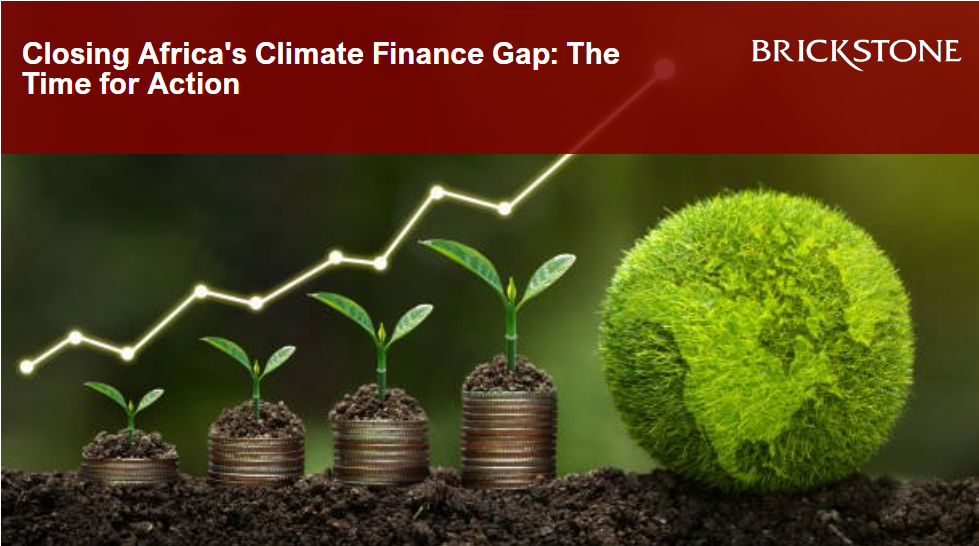Closing Africa’s Climate Finance Gap: Time for Action
Closing Africa’s Climate Finance Gap: The Time for Action
Africa stands at a critical place in the journey of climate transition. This continent is prone to climate change, and its critical and immediate developmental needs demonstrate how adequate financing is needed to cover the climate. African countries contribute the least to emissions worldwide yet face some of the most severe impacts of climate change. This paradox underlines a moral imperative for the international community to support Africa and reflects broader issues of equity and justice in climate action.
In a recently published report, the Climate Policy Initiative states there’s a wide gap in current climate finance with the needs of African countries to the tune of $2.8 trillion by 2030. The gap is enormous. Such a huge gap robs Africa of investments in sustainable infrastructure, renewable energy, and climate-resilient agriculture for a just transition.
The challenge is that most African countries have limited access to international finance, high costs of borrowing, and low private-sector investments. Very often in such a mix, there are global financial flows without the conscious understanding of the African country contexts that may make the investments misaligned in ways that do not respond to the pressing needs.
All this would require is a holistic approach. For international financial institutions, Africa should be given priority in their climate finance strategies; for instance, by working out debt restructuring, concessional lending, and grants—all with a special emphasis on climate resilience. African governments must create an enabling environment that attracts private investments, including reform of regulations, an open and transparent governance structure, and the development of bankable projects.
Finally, the international community must realize climate finance is not an economic question but a question of justice. In addition, climate transition for Africa is not just about mitigation; it involves millions of people who must adapt to the changing climate to secure a good future. The time is now. Success in transitioning Africa onto a climate-resilient development path will, therefore, rely critically on ambition and cooperation levels between governments, financial institutions, and the private sector. Filling the gap in climate finance will ensure Africa thrives—not just survives—during the climate crisis and in a greener, more just world.
Four Key Excerpts on Climate Finance Needs of African Countries.
Serious Climate Finance Gap: There is a very serious climate finance gap in African countries, which negatively impacts our efforts to tackle climate change. For the little contribution to global greenhouse gas emissions, Africa is one of the most stressed regions in terms of the impacts of climate change. The Climate Initiative policy points out that Africa needs roughly $2.8 trillion by the year 2030 to fulfil its Nationally Determined Contributions (NDCs) enshrined in the Paris Agreement. Yet, the current flows of funds are exceedingly lower than what is statically needed; hence the need to raise more funds to fill this void.
Adaption Projects are significantly underfunded: There are very many adaptation projects in African countries which are grossly underfunded. Climate change mitigation projects attract relatively higher funding than adaptation projects, which are necessary throughout the world for building resilience against negative impacts of climate change such as drought, floods, rising sea levels etc. Such funding gaps cannot be tolerated for there is an increasing need for adaptation projects to secure vulnerable people and ecosystems within Africa.
Innovation in Ways of Raising money: The type of funding mechanisms that should be adopted to bridge that climate financing deficit is one which aims at attracting investment opportunities from the private sector. It is pegged on combining public funds with private ones to minimize the investors’ risks which may prove too high. Also, financial engineering in the form of green bonds and the like that has the potential to increase the amount of finance available for climate-friendly activities is essential.
Need for Enhanced International Support: The report emphasizes the need for enhanced international support in addressing Africa’s climate finance gap. Developed nations, who have been the biggest contributors to global greenhouse gas emissions, are urged to honour their obligations to the climate finance funds. This includes the complete redemption of their pledges of $100 billion a year to be contributed by the developing economies for the stance action of the developing countries as well as seeking other innovative financing streams that will provide reliable and consistent funding to the African continent.
This article by Brickstone reviews the Climate Policy Initiative publication on the Climate Finance Needs of African Countries.
Read the reviewed publication here.





